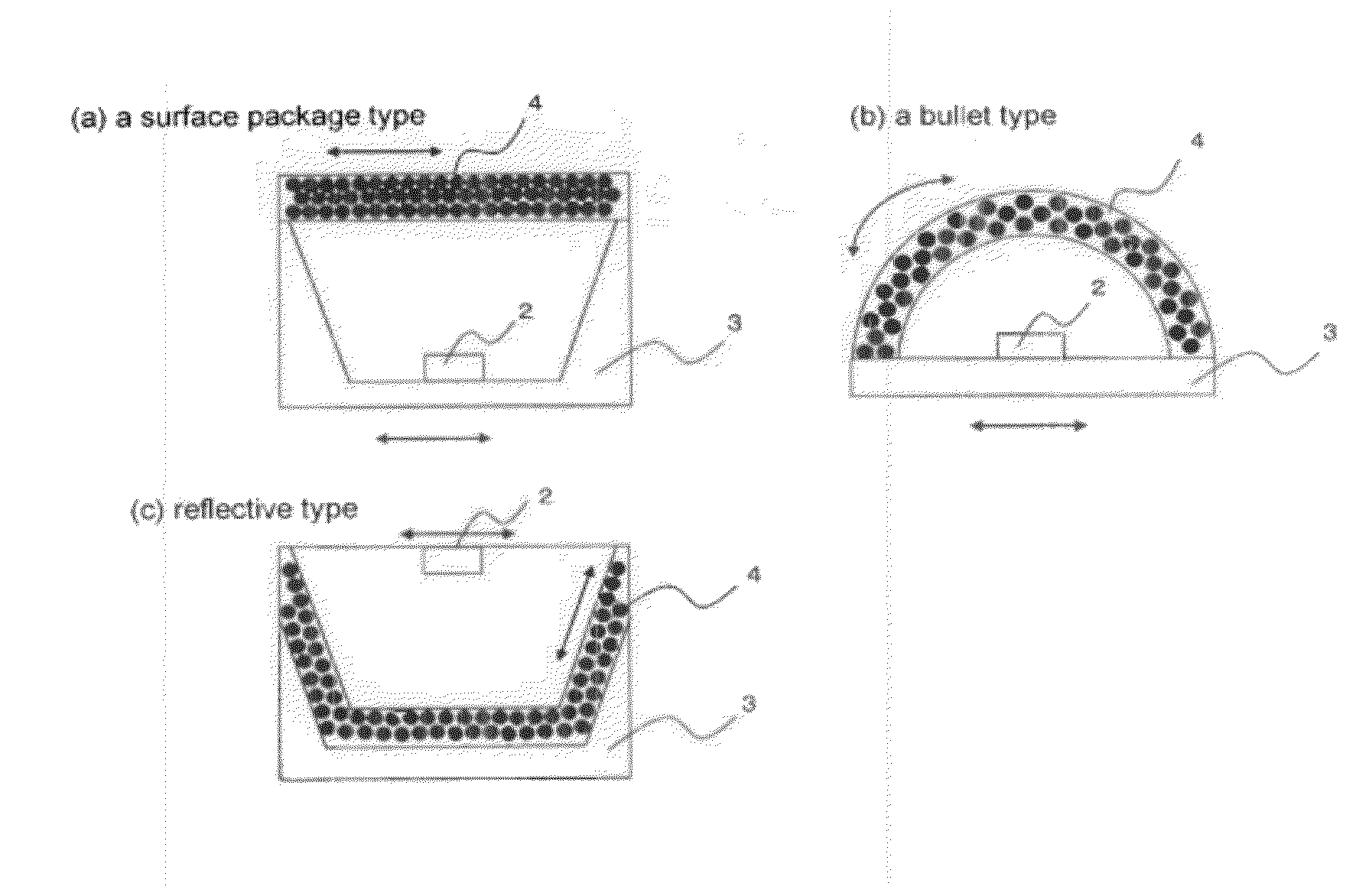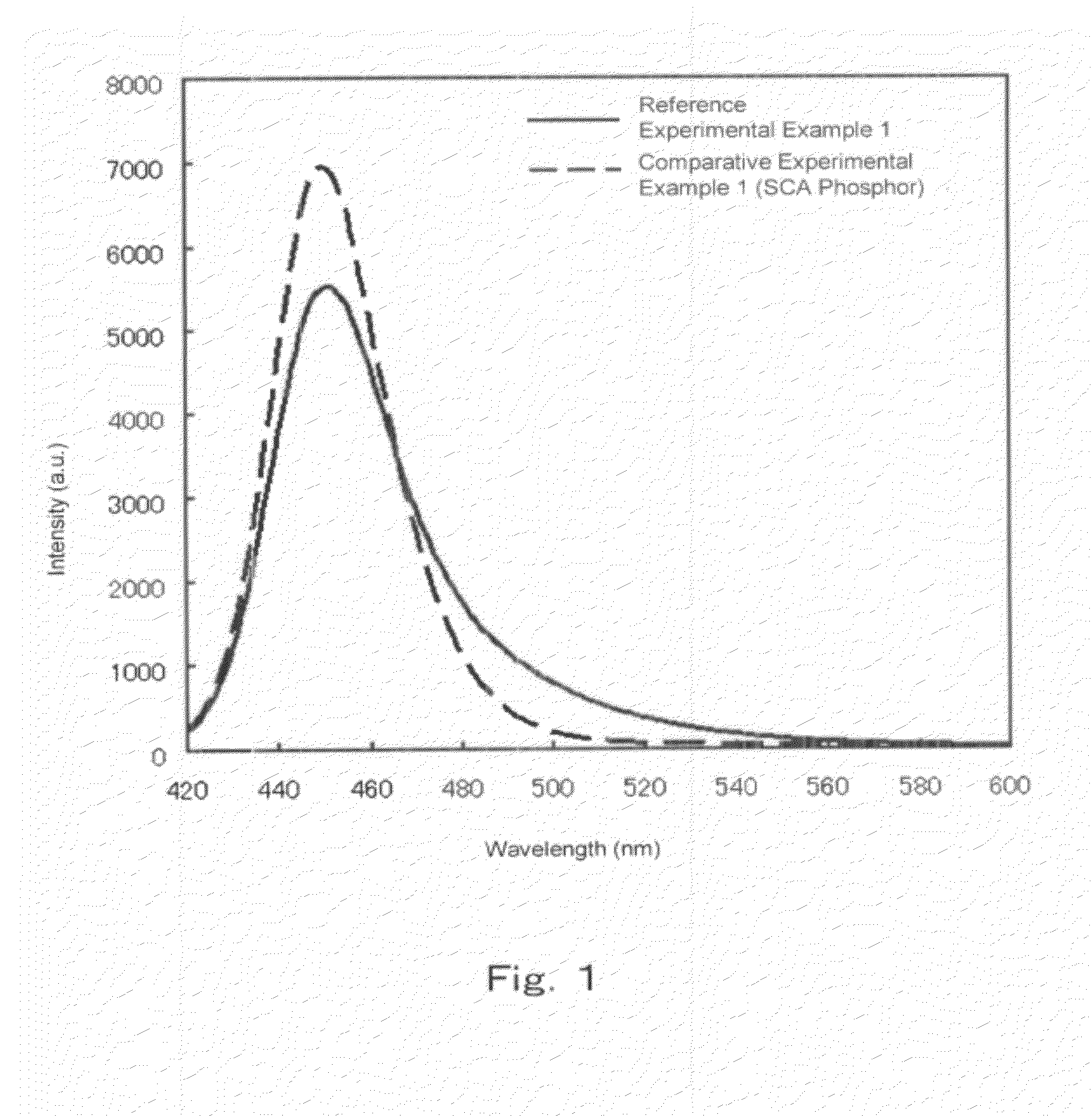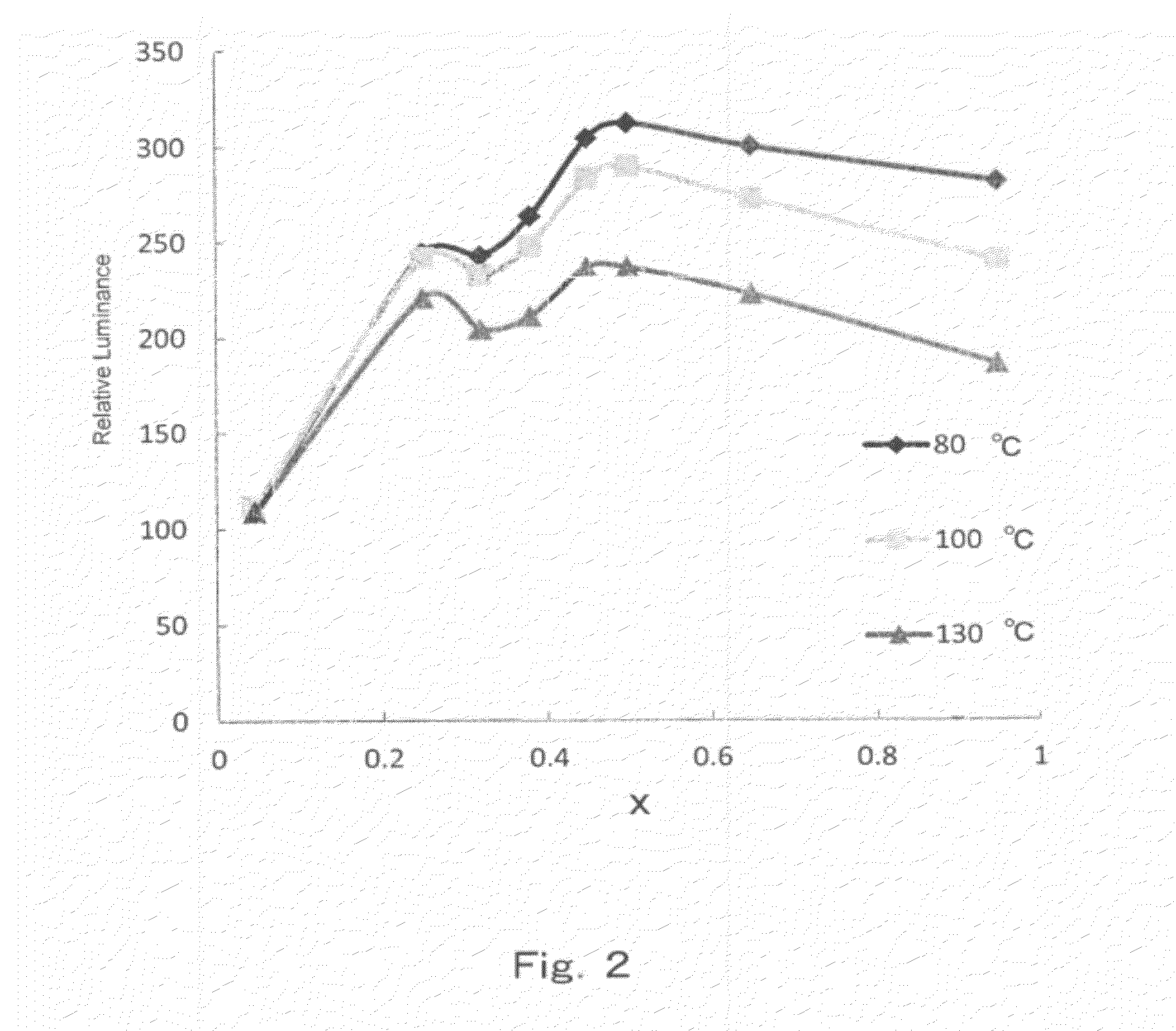Halophosphate phosphor and white light-emitting device
a light-emitting device and halophosphate technology, which is applied in the direction of discharge tube luminescnet screens, energy-saving lighting, sustainable buildings, etc., can solve the problems of poor color rendering properties and low emission luminance, poor emission luminance and color rendering properties of light-emitting devices, and poor emission intensity of light-emitting devices, etc., to achieve excellent bright blue reproducibility, high emission luminance, and sufficient emission intensity
- Summary
- Abstract
- Description
- Claims
- Application Information
AI Technical Summary
Benefits of technology
Problems solved by technology
Method used
Image
Examples
reference experimental example 1
[0357]Herein, SrHPO4 (by Hakushin Chemical Laboratory Co., Ltd.), SrCO3 (by Rare Metallic Co., Ltd, 99.99+%), BaCO3 (by Rare Metallic, 99.99+%), SrCl2.6H2O (by Wako Pure Chemical, Ltd. 99.9%), BaCl2.6H2O (by Wako Pure Chemical, Ltd., special grade) and Eu2O3 (by Rare Metallic, 99.99%) were crushed and mixed with ethanol in an agate mortar so that the mole ratios thereof become 3:0.55:0.45:1:0:0.25; after drying, 4.0 g of the obtained crushed mixture were fired through heating for 3 hours at 1200° C. under a nitrogen gas stream containing 4% of hydrogen, in an alumina crucible, followed by washing with water and drying, to produce thereby a phosphor Eu0.5Sr4.05Ba0.45(PO4)3Cl. In the charge, 0.5 moles of excess SrCl2+BaCl2 were included as fluxes. The composition formulas in Table 1 are corrected on the basis of a chemical analysis.
[0358]To mix the starting material compounds in the present experimental example, mixing was performed according to a wet mixing method using ethanol as a ...
reference experimental example 6
[0367]The same experiment as in Reference experimental example 1 was performed, but modifying the mole ratios of SrHPO4, SrCO3, BaCO3, CaCO3 (by Hakushin), SrCl2.6H2O, BaCl2.6H2O and Eu2O3 in the charge to 3:0.544:0.0056:0.45:0.5:0.5, to yield a phosphor denoted by Reference experimental example 6 in Table 1 and having a b / (a+b) value of 0.10 and a substitution amount of Ca with respect to Sr of 11.1 mol %. The emission characteristics of the phosphor are given in Table 2.
[0368]In this case, the half width was 57, higher than 31 in Comparative experimental example 1, and the luminance was 291, higher than 100 in the comparative example. This is attributable to the broadening of the emission spectrum towards the emission wavelength as a result of incorporation of Ba and Ca. In particular, it is deemed that incorporation of not only Ba but Ca as well results in emission at yet longer wavelengths, and higher luminance. The I(490 nm) / I(peak) value was large, and emission luminance likew...
experimental example 13
, Experimental Example 14, Comparative Experimental Example 6, Comparative Experimental Example 7
[0384]A warm-white light-emitting device was manufactured using the phosphor of Experimental example 3 or the SCA phosphor of Comparative experimental example 1, and the temperature characteristics were evaluated. To manufacture the device, one InGaN-based near-ultraviolet LED chip was packaged in a 3528 SMD-type PPA resin package, and was encapsulated using a phosphor-containing composition in which a blue phosphor (phosphor of Experimental example 3 or SCA phosphor of Comparative experimental example 1) a green phosphor and a red phosphor were dispersed in a silicone resin (produced in accordance with Example 1 described in JP-A-2009-23922). A BSS phosphor (produced in accordance with Example 1 described in WO 2007-09187) was used as the green phosphor, and a CASON phosphor (produced in accordance with Example 1-3 described in JP-A-2007-231245) was used as the red phosphor. Table 7 set...
PUM
 Login to View More
Login to View More Abstract
Description
Claims
Application Information
 Login to View More
Login to View More - R&D
- Intellectual Property
- Life Sciences
- Materials
- Tech Scout
- Unparalleled Data Quality
- Higher Quality Content
- 60% Fewer Hallucinations
Browse by: Latest US Patents, China's latest patents, Technical Efficacy Thesaurus, Application Domain, Technology Topic, Popular Technical Reports.
© 2025 PatSnap. All rights reserved.Legal|Privacy policy|Modern Slavery Act Transparency Statement|Sitemap|About US| Contact US: help@patsnap.com



